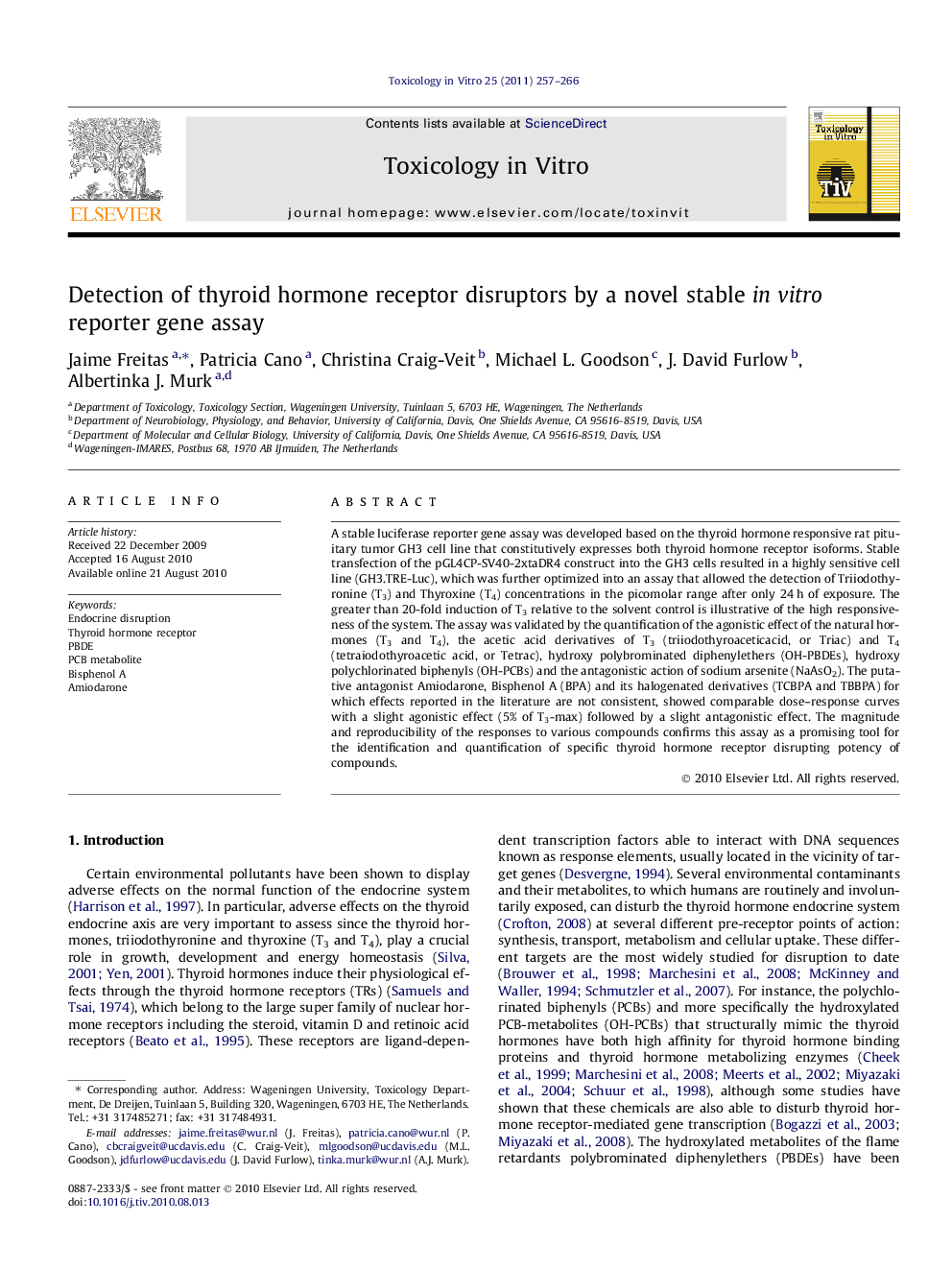| Article ID | Journal | Published Year | Pages | File Type |
|---|---|---|---|---|
| 2602898 | Toxicology in Vitro | 2011 | 10 Pages |
A stable luciferase reporter gene assay was developed based on the thyroid hormone responsive rat pituitary tumor GH3 cell line that constitutively expresses both thyroid hormone receptor isoforms. Stable transfection of the pGL4CP-SV40-2xtaDR4 construct into the GH3 cells resulted in a highly sensitive cell line (GH3.TRE-Luc), which was further optimized into an assay that allowed the detection of Triiodothyronine (T3) and Thyroxine (T4) concentrations in the picomolar range after only 24 h of exposure. The greater than 20-fold induction of T3 relative to the solvent control is illustrative of the high responsiveness of the system. The assay was validated by the quantification of the agonistic effect of the natural hormones (T3 and T4), the acetic acid derivatives of T3 (triiodothyroaceticacid, or Triac) and T4 (tetraiodothyroacetic acid, or Tetrac), hydroxy polybrominated diphenylethers (OH-PBDEs), hydroxy polychlorinated biphenyls (OH-PCBs) and the antagonistic action of sodium arsenite (NaAsO2). The putative antagonist Amiodarone, Bisphenol A (BPA) and its halogenated derivatives (TCBPA and TBBPA) for which effects reported in the literature are not consistent, showed comparable dose–response curves with a slight agonistic effect (5% of T3-max) followed by a slight antagonistic effect. The magnitude and reproducibility of the responses to various compounds confirms this assay as a promising tool for the identification and quantification of specific thyroid hormone receptor disrupting potency of compounds.
